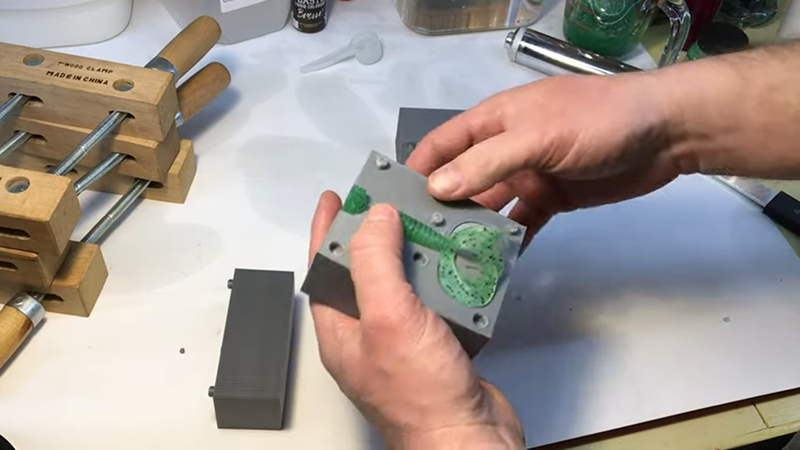Every fisherman has a secret. A secret spot, a secret technique, or a secret bait. Maybe that’s why tying flies is so popular. [Steve] certainly has is own special lures, although he’s not keeping it a secret. (Video, embedded below.) He designs lures in Simplify3D, 3D prints molds, and then casts them.
The 3D printing part is interesting, but it is also kind of neat to see the lures and the natural prey he uses for inspiration. If you want to catch fish, you have to use bait that looks like real food.
[Steve] has other videos that cover more basic lures, but one covers a wavy split line cuttlefish analog and a four-tailed grub. The grub’s mold is in four parts and each part took six hours to print, so this isn’t a project for those of us with short attention spans.
The plastic in use is Dead On Plastix brand “plastisol”. The color is an add-in, so you can create different color bait. In the video, you can see purple and green in the video. The results looked like something you might buy but — of course — better. There was some tweaking needed for one of the molds, but even with the mold that needed tweaking, the results looked fine.
We suppose these could be used with a drone fishing rig. In theory, you could use it for remote ice fishing, but we aren’t sure how you would jig it by remote control.
















Hey, what are you doing going through my YouTube playlist?!? I just started following this fella a few days ago.
I think what you meant to say in the first paragraph is “designed in fusion 360, and sliced in simplify3d” As simplify 3d is a commercial/high end hobbyists slicing tool for fdm. Its not possible to do any 3d modeling/designwork in simplify3d.
The lead pictures reminded me of creepy crawlers from my childhood.
I bought a PIM Shooter 150A off of Craigslist for quite a bit less than list price, and I have printed molds for polypropylene in ABS. It holds up ok. Not great – just ok. The PP melting point is close to ABS and every shot tends to degrade the mold more and more. I had tried to coat the mold in a thin layer of epoxy, and that certainly helped keep it together a bit longer. Ultimately, I think the best way to make molds with FDM is to print a positive and then cast a mold in resin in two halves.
I am interested in trying to SLA print molds, but I don’t yet have access to an SLA printer.
Hi Steve, do you sell the 3D printer plans or the molds?
Yes… The files can be found at https://cults3d.com/en/users/sthone/creations
Hey Steve do you offer tour services to someone wanting a mold made